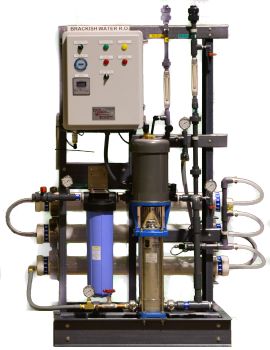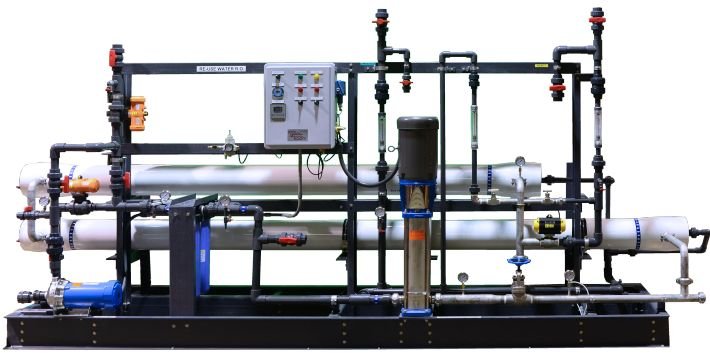Reverse Osmosis, also known as RO, is commonly used for industrial water purification. High pressure water is passed through either thin film composite or cellulose acetate membranes, producing high quality water suitable for all rinses. However it is important that the water is pretreated to protect the membranes from mineral scaling, organic fouling, and chemical degradation. It is also important that a complete cation/anion balance and potential contamination are identified before considering Reverse Osmosis treatment.


We offer complete system capabilities including evaluation and design services, state of the art equipment utilizing membrane and ion exchange technology and expert field service.
There are various water polishing schemes to purify water. Met-Chem will engineer the most cost-effective way to reach the purification level you are targeting.
In the diagram above, city tap water is run through the Activated Carbon Filter, and it will remove organic compounds found in water. This will prevent microbial fouling in the Reverse Osmosis System.
The water is then run through the Water Softener. This will protect your Reverse Osmosis System by removing scale-forming elements such as calcium that cannot be removed by the activated carbon filter.
The Reverse Osmosis System creates a very pure form of water. Reverse Osmosis is a water purification process that uses pressure and a semi-permeable membrane to remove dissolved solids. The RO water is stored in a holding tank.
If the RO water needs more purification, a Deionization System will reduce the conductivity of the RO water. The deionizer will remove trace minerals and charged ions from the RO Water. In the diagram, the RO water is recirculated continuously through the Deionization System where it can be used for rinses and make-up water.
Met-Chem, Inc.
837 East 79th St.
Cleveland, OH 44103
Phone: (216) 881-7900
Email: info@metchem.com
Copyright © Met-Chem, Inc